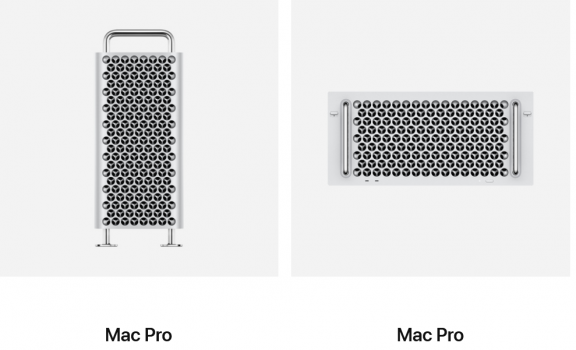I'm not sure you're reading all of what I'm posting.
You're right, that at basics, it's a cache coherency problem. I even used the words cache coherency in one of my recent posts.
But the problem is if you have multiple "expansion cards" with multiple banks of RAM, you no longer have unified memory. You have different pools of memory.
This is literally a non existent issue.
I could jus call it
Unified memory and expandable cash. The point of the cash is just to speed up data transfer from main storage to CPU. this cash being made up of 2-20 DDR sticks have zero relevance.
And again, yes, that's a cache coherency problem. Except now it's much bigger. You have tens or hundreds of gigs of data that all need to be managed and kept coherent.
Nothing needs to be kept coherent. The CPU or GPU will never read from the DDR sticks. They are just intermittent storage for the unified memory when it’s full.
The M1 max have two options now
1: purge the ram for new information and rewrite it from slow storage
2: use the SSD as RAM(this is when it slows down to a crawl)
With expandable DDR dimms available it would not kill the efficiency.
If you're going to have to solve that problem, then the current Apple Silicon architecture no longer makes sense. If you can synchronize multiple discrete banks of memory across multiple cards quickly, just make the GPU separate again.
If you can solve that problem, you've "solved" the same problem Apple Silicon is trying to fix in the first place.
Apple already solved it, and it’s nothing about syncing. The reason they don’t have a GPU memory is because PCIe-5 16x is still 2-4 times slower than DDR5 and with horrible latency. x16 link of pcie5 ~128GB/s vs. pcie4~64GB/s.
And LPDDR5 is normally just 50Gbps/Chanel. Dual Chanel (100Gbps)memory is normal. And sometimes quad memory forr servers(200Gbps). But apple went the extra mile and use 8 memory Chanel’s directly on the die with 400Gbps
There whole purpose of RAM is to eliminate SSD usage as it sucks.
That's why it doesn't make any sense. If Apple figures that out they can go back to a standard architecture with separate GPUs and CPUs. Why bother with any of this? If you get rid of the need for unified memory then _you don't need unified memory any more._ That's why I'm saying it doesn't make sense to combine a unified memory architecture with a discrete one. Either the discrete components will drag unified memory down, or you've designed discrete components that operate just as fast as unified memory, and then why bother with unified memory.
You already have this problem.
SSD storage right now drags unified memory speed as it’s 50 times slower.
Or you could store things in DDR5 moving the bottle neck up depending how much extra memory you have.
Or apple implement 8 Chanel memory with higher latency.
(My hunch again is that physics will probably be a problem here, and that one reason everything exists on the same package is to minimize the distance signals need to travel.)
Memory speed has nothing to do with the definition of UMA. At that speed, that would be faster than vanilla M1 anyway.
You are right that is why
There are UMA Ryzens with fast memory. There are UMA Ryzens with slow memory. Just depends what you're willing to spend. Ryzen systems like the Xbox Series X use faster UMA memory, faster than even M1 Max AFAIK.
Yes because it’s a custom solution. Apple will never use it tho as it’s x86. And they have their own solution.
You can even build PC with a Ryzen 4700S. That has DDR6, which is faster than what Apple uses. (AMD only sells it as a kit because it's literally PS5 CPUs/boards that didn't pass binning. Technically it's a UMA chip, but unfortunately the GPU is what didn't pass binning on it. Lol.)
DDR6 doesn’t exist. Your talking about GDDR6x and it could be used by apple. It’s just more expensive, more power hungry and much more latency than LPDDR5.
And no, you can build now computers with the same speed as apple M1 max, they just happen to be server class CPUs and not ever used in laptops.
And why would you ever want the Max pro to have a smaller form factor? Just remake the Mac mini instead unless you want the trash can crisis again.


